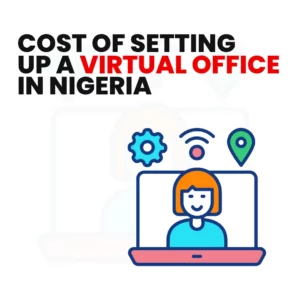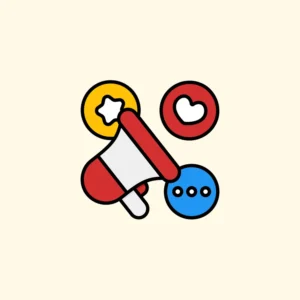In the world of minimalist web design, the motto is “less is more.” This article is for you if you want to create a website that looks clean. When browsing the internet, people want simple and easy-to-use. By following minimalist principles, you can get rid of the clutter and show your information in a clear and sophisticated way. Your users will appreciate it, and your website will stand out in the busy online world.

What is a minimalist web design?
At its heart, minimalist web design embraces simplicity to create a strong visual effect. Here, you won’t find any extras that aren’t needed or that are too much. Instead, each part is carefully picked and placed to make a balanced whole that draws attention to the most important features.
You’ve probably seen a minimalist web design when you land on a site that immediately feels clean, uncluttered, and beautiful. In the digital age, where there are a lot of distractions, it is vital to design a website that keeps people interested and gives them a smooth experience. This is where minimalist web design can do its magic, and we’ll show you how in this post.
Imagine a website with a clean layout, lots of white space, and carefully chosen fonts that make it easy for your eyes to move from one area to the next. With a minimalist method, you don’t give your visitors too much information or distracting images. Instead, you give people a focused and well-organized interface that makes finding what they’re looking for and interacting with your content easier.
Why minimalist web design is good
When creating a website, minimalist web design is a handy tool. It is not just about following the latest design trend; it is a choice to improve the user experience. It also makes your content easier to understand and leaves a lasting impression on your visitors. Let’s discuss why you should use a minimalist design for your website.
Minimalist web design is perfect for website users because it improves their browsing experience in many ways:
- Minimalist design gets rid of distractions and visual clutter that aren’t needed, giving users a clear interface. Because the design is simple, it is easy for users to find the information they need quickly.
- Visitors don’t have to wait long for pages to load on minimalistic websites because there are fewer things to load. Hence, they are less frustrated and less likely to exit.
- Simplified navigation and a minimalist design make it easier for website users to get around and find what they need.
- Minimalist web design puts a lot of weight on content, ensuring that the most important information stands out. Visitors can pay attention to the message or products without being distracted by too many images or a complicated style.
- Readability is improved by writing with a purpose and lots of white space in a minimalist design.
- Clear calls to action and multimedia features that don’t discourage users from taking profitable actions.
- Minimalist design usually follows accessibility standards, which makes the website more open to all users, even those with disabilities.
- A clean and modern style gives visitors a memorable experience. The sophisticated look of the website makes the brand look good, which builds trust and trustworthiness.
Read Also: What Are the Features of a Great Website Homepage?
What are the characteristics of minimalist web design?
Minimalist web design is the way to go if you want to make a site that looks clean and modern and leaves a lasting impression. By focusing on simplicity, purpose, and clarity, you can make an online place that looks good and works well. Let’s look at 5 characteristics of a minimalist web design and see how they can significantly help you and your website.
1. Legible typefaces
In minimalist design, typography is a vital part. Choose fonts that are easy to read and fit your brand’s style. Keep the fonts on your website the same so you can set up a hierarchy and lead your users through the information smoothly. When display typefaces are used in minimalist design, they are the ‘design,’ i.e., there are not used along with other elements (like images or videos.) When there aren’t many things on a page, like colour, bold typeface becomes another way to get your point across.
- A unique font compensates for the lack of photos or videos by making a minimalist web design more visually attractive.
- Font size, weight, and style changes help users understand the text’s hierarchy and relative value.
- You can easily use a custom font if your text is an image. However, your page will load slower. In such cases, you must consider scaling it for different screen sizes for responsiveness and accessibility. An excellent solution is to use web fonts.
- Be careful not to use too much fancy font. Users will ignore overly formatted text if it looks too much like advertising.
- There is a fine line between typography that is truly bold and typography that is distracting. Hire a professional web designer who is experienced in using advanced typography.
- If you want people to understand the text, ensure it can be seen and read. Remember that readability means how well people can tell each letter apart. How easy it is to read is based on how well they can understand words and sentences and scan the text.
2. Whitespace for balance
Whitespace, also called “negative space,” is an integral part of simplicity. The space between things on your website gives it room to breathe and makes the information stand out. Use whitespace to create balance and unity in your design, making the user’s experience calm and elegant. You must leave the room when you take something off a web page or don’t include it.
People have said that negative space is “practically synonymous with” minimalist designs and is “the backbone of” them. Many minimalist designers use it to draw users’ attention and make it easier for them to understand the text. When used right, whitespace can draw attention to important information. Consider the following questions when planning to use negative space in your projects.
- Will users have to struggle to get the information they need?
- How will the negative space affect use engagement or interaction?
- How will the whitespace need to change at different resolutions?
- How will adding or removing negative space change how the page’s structure is shown?
- What will happen to the information at the top of the page because of the whitespace?
3. Media and pictures that improve user experience
In minimalist design, high-quality pictures can improve the design. These images have been carefully chosen to support and enhance your content instead of taking over. Use multimedia carefully and ensure it adds to your message without taking away from it. One of the most debated parts of minimalist Web design is using a big background image or video, which is made possible by HTML5. Theoretically, a big background picture goes against the main idea of minimalism – less is more. However, many minimalist designs use big background images or videos.
Depending on the situation and brand goals, big background images or videos can affect how users think of a brand. When a background picture is used strategically, minimalist design can prevent other elements from competing with or clashing with the background.
If you decide to use a picture or video as a background for your minimalist design, keep these things in mind:
- Videos shouldn’t start playing on their own. Many people get annoyed when videos start playing independently without their permission, especially if the videos have sound.
- Videos shouldn’t start playing on their own. Many people get annoyed when videos start playing independently without their permission, especially if the videos have sound.
- If you’re using a carousel or video, you need to try every background—every image or frame of the video—at different screen resolutions.
- Don’t make videos with slow-moving people in the background. You don’t want to take your users’ attention away or scare them.
- Be aware of how large pictures and videos can slow down your computer. Ensure you optimize your images so your mobile users don’t have to wait for a retina picture the size of a desktop to load over their network data connection.
- Ensure the pictures or videos you choose have a real purpose or help people understand the site. Otherwise, they’ll distract people from the information you want them to see.
Read Also: 7 Key Elements of a High-Converting Landing Page Design
4. Limited colour palette
Minimalism uses a small number of colours that work well together. Choose website colours that go with your business and make people feel how you want them to. By using colour on purpose, you can draw attention to certain parts and make things look interesting without making the user feel overwhelmed. Most minimalist interfaces strategically use colour to draw the eye or attention to something without adding more design elements or authentic graphics. With less visual information to compete for a user’s attention, a site’s colour scheme will stand out more and have a bigger effect.
The idea behind muted colour schemes is to not steal the show from the content, which can still be brightly coloured in the case of pictures. Many minimalist designs are either all one colour or use only one bold colour as an accent. This colour is used sparsely to draw attention to the most important parts of the site. Most of the time, you can click on these highlighted parts.
The rising popularity of minimalist web design moves screens away from the typical vivid colour schemes across the internet. However, here are some things to consider when working with a limited colour palette;
- Use accent colours on purpose and regularly to draw attention to the most important information or activities.
- Make sure your colour scheme has enough contrast for people with poor eyesight or colour blindness to be able to read it.
5. Simplified navigation
A simple website is easy to get around on. The browsing menu is clear and easy to use, so you can easily find what you want. Clear labels make it easy for users to move around your website. Desktop versions of many minimalistic websites use the hamburger menu. This usually happens when the web designer implements a mobile-first design strategy. Sometimes, they don’t consider the needs of desktop users or the extra screen space they have.
It can also happen when people try to be too minimalist. It might make sense to hide features that are used sparingly. However, display essential tools and links for an excellent user experience. This point is exceedingly crucial for websites with a truckload of content or e-commerce website/blogs with several categories.
Final thoughts
Every part of minimalist web design adds to a smooth user experience, from putting your content first to using purposeful typography and a limited colour palette. Because your website has a lot of white space and easy-to-use controls, it will be easy for people to find the information they want.
Remember that a responsive design is necessary in today’s mobile-driven world and that speed optimization ensures faster loading times for a great user experience. Keeping your website consistent reinforces your company identity and makes it easier for people to trust you. By focusing on simplicity, clarity, and purpose, you can design a website that looks good, is easy to use, and gives visitors a lasting impression.
Need a minimalist web design? Work with a professional web designer in Lagos. I follow the best practices of minimalist web design to present a game-changing experience to your visitors.




